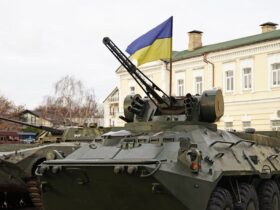To safeguard people and communities from diseases that can be prevented by vaccination, following proper handling and storage procedures for vaccines is crucial. Everyone bears some of the responsibility for vaccine quality, from the point of manufacture until administration. Because vaccines are sensitive to temperature changes, temperature monitoring is essential for both vaccine distribution and storage.
Importance of Temperature Monitoring
- Healthcare Temperature monitoring is essential since everyone is accountable for vaccine quality, from those who manufacture them to those who administer them.
- Because vaccines are extremely sensitive to temperature, improper storage can make them ineffective.
- Vaccines are kept within the recommended temperature ranges by constant monitoring.
Top Techniques
- Upon delivery, check vaccines regularly.
- Keep an eye on the storage temperature to keep things as indicated.
- To confirm cold chain effectiveness, use data loggers.
- Observe vaccination handling and storage instructions.
For the following principal reasons, temperature monitoring is critical to preserving vaccine efficacy:
Preserving Vaccine Efficacy
Vaccines subjected to temperatures higher than recommended can cause the sensitive biological elements they contain to lose effectiveness. Keeping vaccines at the right temperature guarantees that they continue to work as intended to protect against illness.
Preventing Vaccine Wastage
Ineffective vaccines that must be thrown away could result from improper storage at the wrong temperature, wasting expensive supplies. Frequent temperature monitoring reduces the chance of wastage by assisting in the detection of any deviations from ideal storage conditions.
Respect for Regulatory Standards
Strict regulations are in place for vaccine storage temperatures, and organizations like the Centers for Disease Control and Prevention (CDC) and the World Health Organization (WHO) enforce them. Adherence to these guidelines is crucial in guaranteeing the security and effectiveness of vaccinations.
Preserving the Integrity of the Cold Chain
The cold chain describes how vaccinations are kept refrigerated from the point of manufacture to the end of administration. Every step of the cold chain is monitored for temperature to help preserve its integrity and ensure vaccinations aren’t exposed to anything that could tarnish their purity.
Protection Against Spoilage
Vaccines can become ineffective or even dangerous if they are exposed to excessively high or low temperatures. Temperature monitoring enables corrective action to be conducted by quickly identifying any anomalies before vaccines are contaminated.
Quality Control
Temperature monitoring during storage and delivery ensures that vaccinations have been handled correctly and are safe to administer. It reduces the possibility of giving patients tainted or ineffective vaccinations by assisting in the early detection of any such problems.
Data Logging and Documentation
Continuous temperature data recording is made possible by the data logging features that are frequently included in temperature monitoring systems. This documentation records the temperature conditions during distribution and storage, which is essential for compliance purposes.
Key Takeaway
In conclusion, temperature monitoring is critical to distributing and storing vaccines to guarantee their safety, effectiveness, and adherence to legal requirements. Ensuring that vaccinations keep their effectiveness until they are given to patients helps avoid waste, preserve the integrity of the cold chain, and protect public health.












